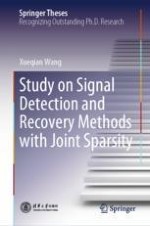2024 | Buch
Über dieses Buch
The task of signal detection is deciding whether signals of interest exist by using their observed data. Furthermore, signals are reconstructed or their key parameters are estimated from the observations in the task of signal recovery. Sparsity is a natural characteristic of most of signals in practice. The fact that multiple sparse signals share the common locations of dominant coefficients is called by joint sparsity. In the context of signal processing, joint sparsity model results in higher performance of signal detection and recovery. This book focuses on the task of detecting and reconstructing signals with joint sparsity. The main contents include key methods for detection of joint sparse signals and their corresponding theoretical performance analysis, and methods for joint sparse signal recovery and their application in the context of radar imaging.
Anzeige
